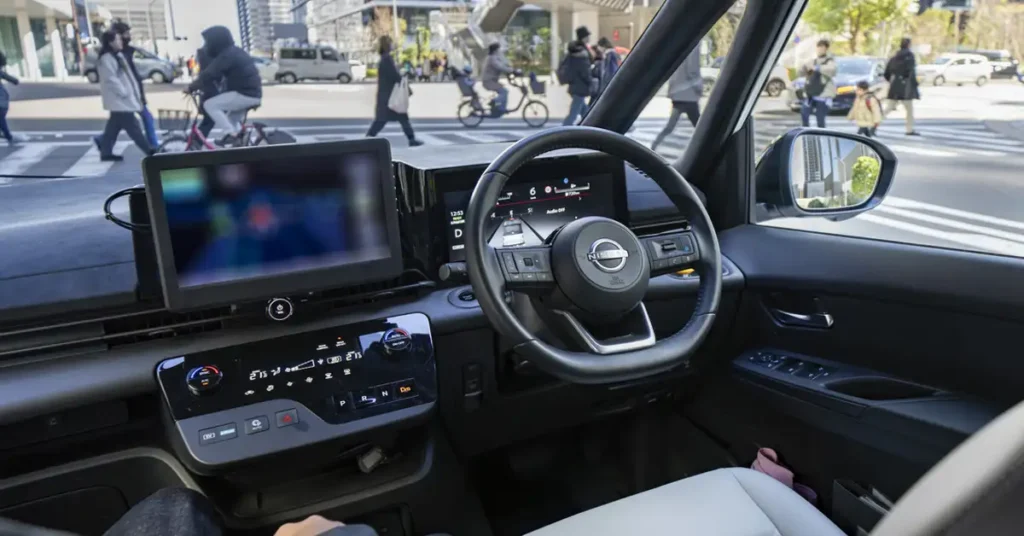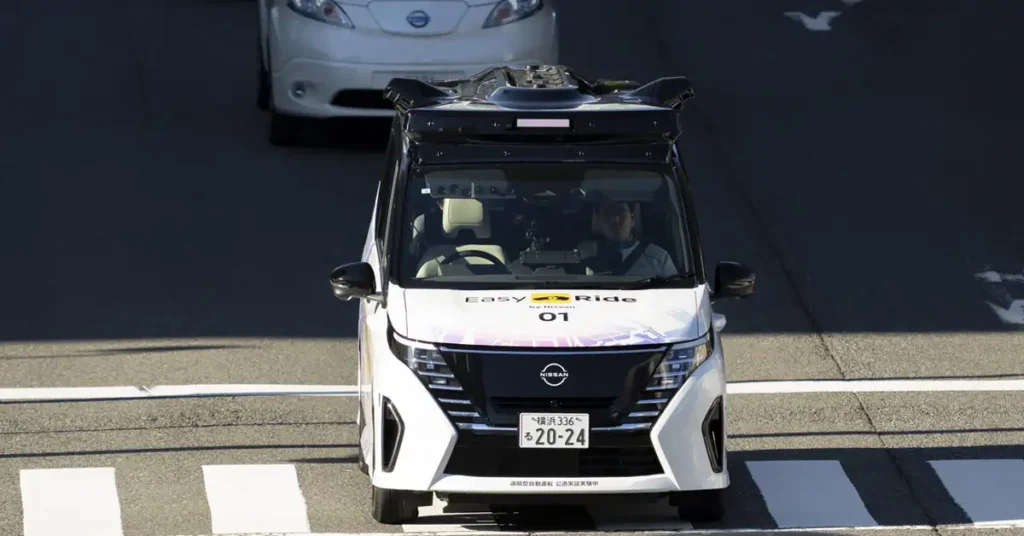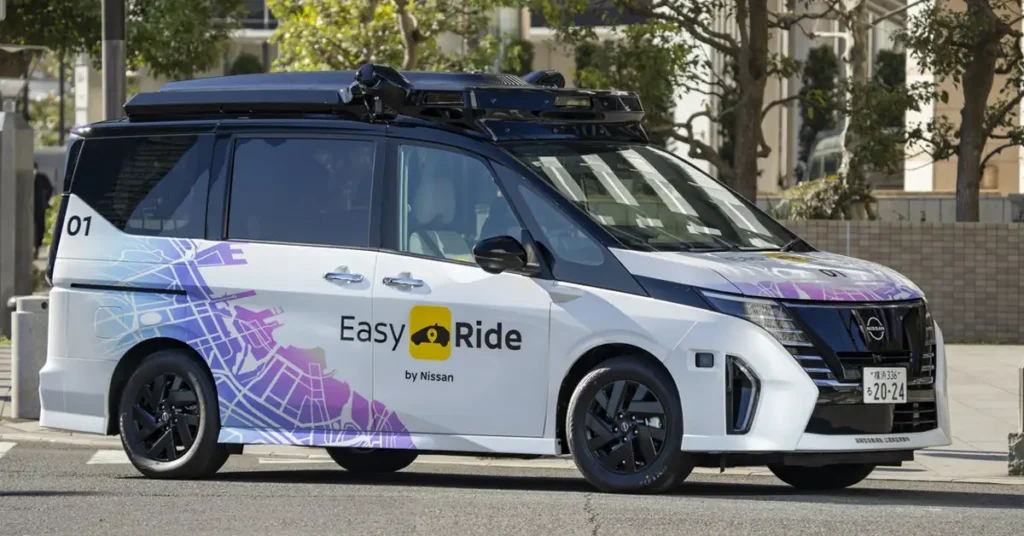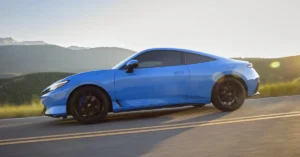On a quiet day in March 2025, Nissan took a bold step toward that reality. In Yokohama’s bustling Minato Mirai district, a Nissan Serena glided through public streets completely on its own. No driver behind the wheel. No safety net of human reflexes. Just sensors, algorithms, and years of engineering finally finding their rhythm in the real world.
It wasn’t a PR stunt or a futuristic concept video. It was a genuine test a car driving itself through live city traffic. And with that, Nissan has inched closer to turning autonomous driving from fantasy into a functioning, everyday experience.
Beyond the Hype: Why Nissan’s Test Matters
This moment was more than a headline-grabber. It was a reflection of a deeper shift not just in technology, but in purpose.
Japan, like many developed nations, faces a growing challenge: an aging population and a shrinking pool of professional drivers. Public transport in smaller towns is thinning out, and logistics networks are under pressure. Nissan’s experiment addresses these very issues not with concept sketches or grand promises, but with tangible, road-tested progress.
The company’s vision goes beyond selling self-driving cars. It’s about building autonomous mobility services vehicles that can move people or goods without human intervention, filling the mobility gaps in society. By 2027, Nissan hopes to introduce full driverless services in Japan.
It’s a bold move and one rooted in necessity.
Inside the Machine: How Nissan’s Driverless System Works

(Image Source: Global Nissan news)
Nissan’s Serena test vehicle is no ordinary minivan. Beneath its familiar body lies a dense network of sensors, processors, and redundancy systems working in harmony.
Here’s the tech in motion:
- Vision & Detection: 14 cameras, 9 radars, and 6 LiDAR sensors are strategically placed many on the roof to create a 360° understanding of the world around the car.
- Artificial Intelligence: Advanced algorithms interpret this visual data in real time, predicting the movements of pedestrians, cyclists, and other vehicles.
- Fail-Safe Design: Redundant systems, backup power, and emergency stop protocols ensure the vehicle can handle unforeseen issues safely.
- Vehicle Control Interface: Nissan’s proprietary VCI links these smart systems directly to steering, acceleration, and braking making the digital brain command the mechanical body.
- Steer-by-Wire Technology: Removing the traditional mechanical link between wheel and axle, this gives smoother, more precise control and allows the car to respond instantly to AI input.
The result isn’t just a self-driving car it’s a platform for mobility services that could one day operate seamlessly in dense cities or quiet suburbs.
From Concept to Road: The Path to 2027

(Image Source: Global Nissan news)
Autonomous driving isn’t something you can rush. Nissan’s rollout plan is methodical, structured, and refreshingly grounded.
Phase 1 (2025–2026): Limited-area public trials in Yokohama, with multiple Serena vehicles running defined routes. Each journey is remotely monitored by operators in a control hub, ensuring real-time supervision.
Phase 2: Over 300 local residents will take part as real passengers, offering feedback on comfort, reliability, and usability.
Phase 3: Gradual escalation from Level 2 (supervised) to Level 4 (fully driverless) operation, targeting full deployment by 2027.
Nissan’s public pilot, planned between November 2025 and January 2026, will run across 26 stops in central Yokohama. It’s less about spectacle and more about precision gathering real-world data to make autonomy safe, predictable, and scalable.
The Challenge: Making Autonomy Trustworthy
Autonomous driving is one of modern engineering’s greatest balancing acts.
Urban environments are unpredictable. Children dart across roads, delivery bikes appear out of nowhere, and weather can warp sensor perception. A single mistake isn’t just costly it could shatter public confidence in the entire industry.
Nissan’s engineers understand this. Instead of rushing to show off, they’re taking an incremental, data-driven approach. Each test adds to a growing library of real-world driving data, refining AI systems and decision-making logic. It’s a patient process, but one that builds trust brick by brick not through hype, but through proof.
How Nissan Compares to the Competition
Every major automaker is chasing autonomy, but not all are taking the same road.
| Feature | Nissan | Competitors |
| Testing environment | Real public roads in Yokohama | Mostly geo-fenced or private zones |
| Sensor strategy | Balanced mix of cameras, radars, and LiDAR | Some, like Tesla, rely primarily on cameras |
| Current autonomy level | Level 2 (with human supervision) | Varies from Level 2 to early Level 4 |
| Deployment goal | Full driverless operation by 2027 | Some earlier, others still in prototype stages |
| Approach | Public participation & government partnership | Mix of private and closed-loop trials |
Nissan’s edge lies in its collaborative and regulatory-first strategy. Instead of breaking rules to make headlines, the brand is building systems meant to coexist with real infrastructure and real people.
Quick Facts: Nissan Serena Autonomous Prototype
| Specification | Details |
| Model | Nissan Serena (prototype) |
| Cameras | 14 |
| Radar Units | 9 |
| LiDAR Sensors | 6 |
| Max Test Speed | Moderate urban speeds |
| Testing Level | Level 2 (driver present) |
| Goal | Level 4 service by 2027 |
| Trial Area | 26 stops across Yokohama |
| Participants | 300+ residents in pilot phase |
Frequently Asked Questions
Q: How is Nissan keeping its driverless trials safe?
Safety is at the core of Nissan’s development strategy. Each prototype is equipped with multiple backup systems, real-time remote monitoring, and an emergency stop function. Before any test begins, engineers simulate hundreds of driving scenarios to ensure the vehicle can react safely under all conditions.
Q: What level of autonomy are these vehicles currently operating at?
The Serena test vehicles now operate at Level 2 autonomy, which means a safety driver remains in the vehicle to oversee operations. By fiscal year 2027, Nissan plans to advance to Level 4 a truly driverless system capable of handling most urban driving conditions independently.
Q: How does Nissan’s approach differ from Tesla or Waymo?
Nissan is taking a more measured, data-driven route. While Tesla relies heavily on cameras, Nissan integrates LiDAR, radar, and camera sensors for a more complete 360-degree view. It’s not about being first to market it’s about ensuring reliability and public trust through gradual, verifiable progress.
Q: Will these autonomous vehicles eventually be available to private buyers?
Not immediately. The first rollouts are focused on shared mobility services, such as community shuttles and urban ride-hailing. Once the ecosystem matures and public confidence grows, consumer-oriented versions may follow.
Q: What’s the bigger vision behind Nissan’s driverless push?
At its heart, Nissan’s autonomous program is about freedom of movement. The company aims to solve real mobility challenges especially in regions facing driver shortages and aging populations by offering safe, efficient, and inclusive transport options that complement human-driven systems, not replace them.
The Road Ahead
What Nissan has achieved in Yokohama is more than a technological demonstration it’s a glimpse of how future cities might function. Quiet fleets of driverless vehicles moving people efficiently, safely, and sustainably.
The path from here to full autonomy isn’t short, but Nissan’s steady, transparent approach feels like the right kind of progress: real, responsible, and rooted in practicality.
When cars finally learn to drive themselves, it may not be the flashiest company that wins but the one that took its time to get it right.
MotorHub Tech Insights
Stay ahead of the curve with MotorHub, your trusted source for the latest automotive technology updates. From autonomous driving breakthroughs to EV innovation and intelligent diagnostics, we bring you expert insights that shape the future of mobility. Follow MotorHub for real-world updates, industry trends, and in-depth coverage on how technology is redefining the way we drive, service, and experience vehicles.



